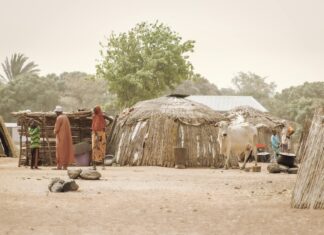By Francis Ogwo
The Central Bank of Nigeria has disclosed that loans to customers by banks were priced between 15.01% and 30.70% in the first quarter of this year.
According to the report released over the weekend, the lenders, however, refused to pay more interest on customers’ deposits within the period in review.
Details further revealed that the average prime and maximum lending rates rose by 0.02% point and 0.47% point, respectively, to 15.01% and 30.70%, in the review period, above their levels in the preceding quarter.
The average prime and maximum lending rates stood at 29.98% and 14.99% respectively in the fourth quarter of 2019.
Analysts have said that the rising lending rates have resulted in a rise in pressure on market rates and cost of production for the manufacturing sector.
The apex finance institution also observed that banks were paying less deposit interest to depositors despite the rise in lending rates.
The average-term deposit rate fell by 1.46% to 6.27%. The spread between the average term deposit and average maximum lending rates widened by 1.93% to 24.43%.
The spread gap indicated that customers are paying 24.43% higher fee than they are getting from banks. However, the Monetary Policy Rate (MPR), which is the benchmark interest rate at which the CBN lends to the commercial banks, is currently at 12.5%.
Despite the rise in lending rates, CBN Governor, Godwin Emefiele, said aggregate domestic credit (net) grew by 5.16% in June 2020 compared with 7.47% in May 2020.
The total gross credit in Nigeria rose by N3.33trn from N15.56trn at end-May 2019 to N18.90trn at end-June 2020. These credits were largely recorded in manufacturing, consumer credit, general commerce, information and communication, and agriculture, which are productive sectors of the economy.
The CBN said the rise in interest rate reflected the liquidity condition in the system, explaining that the inflation rate of 12.26% for March 2020 resulted in negative real rates for deposits, but positive real rates for the prime and maximum lending rates.
“With the headline inflation at 12.26% in March 2020, all deposit rates remained negative in real terms, while prime and maximum lending rates were positive in real term,” the report said.
Continuing, the report showed that money market rates were generally stable and moved in tandem with the level of liquidity in the first quarter of 2020. Daily interbank call and Open Buy Back (OBB)-discountable securities traded in the Nigerian Inter- Bank financial transactions- rates ranged from 5% to 7.24% and 1.77% to 21.02%, respectively.
Average interbank and OBB rates were 10.68% and 12.08%, respectively.
Other rates, such as the 7-day and 30-day at the Nigerian Inter-Bank Offered Rate (NIBOR) traded at averages of 11.74% and 9.81%.











